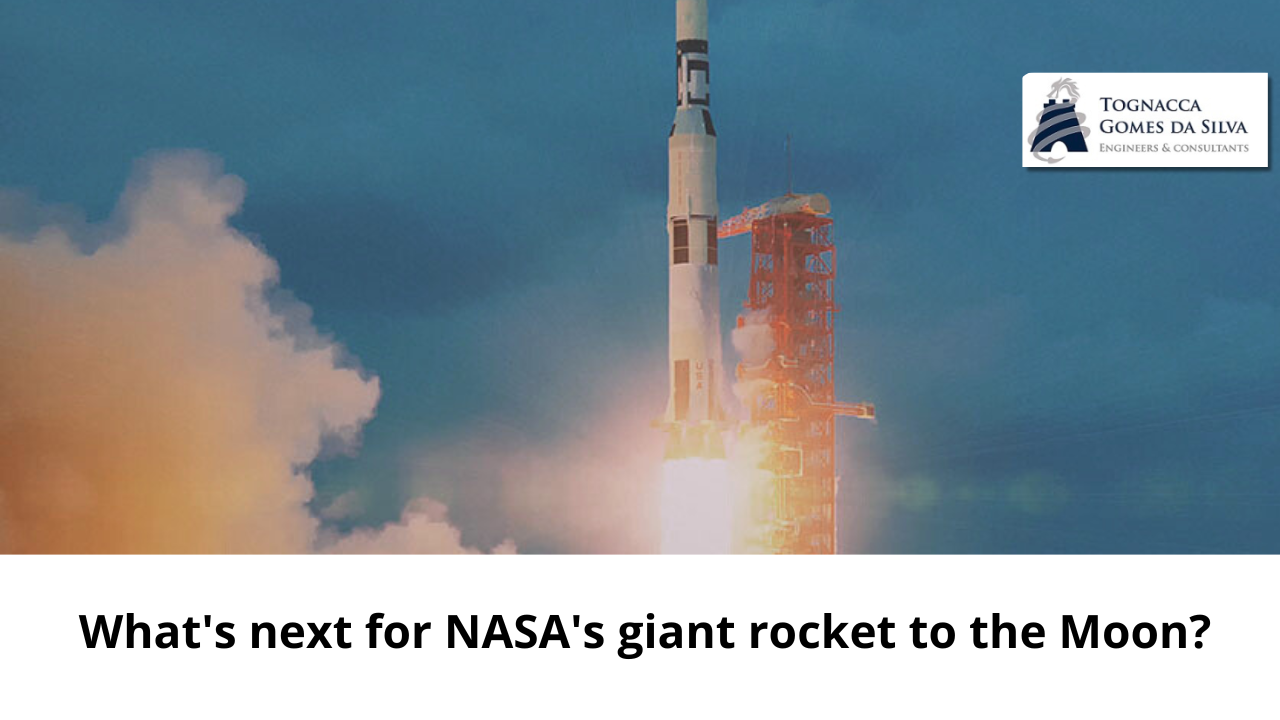MIT Technology Review’s “What’s Next” series looks at different industries, trends, and technologies to offer a first look at the future. You can check out the rest of the series here.
NASA’s massive moon rocket, the Space Launch System (SLS), could be in trouble. As rival launchers like SpaceX’s Starship gather pace, some are questioning the need for the United States’ national space agency to have its own large rocket – something that could become a focus of the upcoming Trump administration in the future. in which SpaceX CEO Elon Musk plays an important role.
“It is in Elon Musk’s interest to convince the government to cancel the SLS,” says Laura Forczyk, from the North American space consultancy company Astralytical. “However, it is not up to him.”
SLS has been in development for over a decade. The rocket is huge, 98 meters tall (322 feet), and about 15% more powerful than the Saturn V, the rocket that took Apollo astronauts to the Moon in the 1960s and 1970s. with an estimated cost of 4.1 billion dollars per launch.
It was designed with a clear purpose: to return astronauts to the surface of the Moon. Built to launch NASA’s Orion manned spacecraft, the rocket is an important part of the agency’s Artemis program aimed at returning to the Moon, started by the Trump administration in 2019. “It has an important role to play,” says Daniel Dumbacher, former NASA deputy administrator and member of the team that selected SLS for development in 2010. “The rationale for SLS is still unfolding. maintains.”
The rocket has already made its first launch on the Artemis I mission in 2022, a test flight that sent the unmanned Orion spacecraft around the Moon. Its next flight, Artemis II, scheduled for September 2025, will be the same mission, but with a crew of four, ahead of the first lunar landing, Artemis III, currently scheduled for September 2026.
The SLS could also launch missions to other destinations. At one point, NASA intended to use SLS to launch the Europa Clipper spacecraft, destined for Jupiter’s moon Europa, but due to costs and delays, the mission was launched in October this year aboard a SpaceX Falcon Heavy rocket. It was also considered that the SLS would be responsible for launching parts of NASA’s new lunar station, Gateway, scheduled to begin in 2028. The station is still under development.
NASA’s plan to return to the Moon involves using the SLS to launch astronauts into lunar orbit aboard Orion, where they will rendezvous with a separate lander to descend to the surface.
Right now, that lander will be SpaceX’s Starship spacecraft, a massive reusable space shuttle meant to launch and land multiple times. Musk wants this rocket to take humans to Mars in the future.
Starship is currently in the testing phase. Last month, it completed an impressive flight in which the lower part of the rocket, the Super Heavy booster, was captured by SpaceX’s “chopstick” launch tower in Boca Chica, Texas. The rocket is ultimately more powerful than the SLS and designed to be fully reusable, whereas NASA’s rocket is jettisoned into the ocean after each launch.
The success of Starship and the development of other large commercial rockets, such as Jeff Bezos’ Blue Origin’s New Glenn, have raised questions about the need for SLS. In October, billionaire Michael Bloomberg called the rocket “a colossal waste of taxpayer money.” In November, journalist Eric Berger said there was at least a 50% chance the rocket would be canceled.
“I think it would be the right decision,” says Abhishek Tripathi, former SpaceX mission director now at the University of California, Berkeley. “It’s hard to point to SLS as something necessary.”
However, the calculations are not simple. Dumbacher notes that while SpaceX is making “great progress” with Starship, there is still much to be done. The rocket will need to carry out up to 18 launches to transfer fuel to a single lunar Starship in Earth orbit, which will then be able to make the trip to the Moon. The first test of this fuel transfer is scheduled for next year.
SLS, on the other hand, can send Orion to the Moon in a single launch. This means that the case for SLS would only be diminished “if the cost of 18 Starship launches is less than that of one SLS launch,” says Dumbacher. SpaceX received $2.9 billion from NASA in 2021 for the first Starship mission to the Moon, on Artemis III, but the exact cost per launch is still unknown.
NASA is also developing hardware for future SLS launches. “All elements for the second SLS for Artemis II have been delivered,” a NASA spokesperson said in response to emailed questions, adding that the SLS also has “hardware in production” for the Artemis III, IV missions. and V.
“The SLS can deliver more payload to the Moon in a single launch than any other rocket,” NASA said. “The rocket is necessary and designed to meet the agency’s lunar transportation requirements.”
Dumbacher points out that if the US wants to return to the Moon before China sends humans there, something the country has said it will do by 2030, canceling the SLS could be a step backwards. “Now is not the time to reevaluate which rocket is the best,” he says. “Every minute of delay we cause puts us in a situation where China can put people on the moon first.”
President-elect Donald Trump has given Musk a role in his administration to cut public spending, as part of the newly created Department of Government Efficiency. While the exact scope of this initiative is not yet clear, projects like SLS could come under scrutiny.
Canceling the SLS would require support from Congress, however, where Republicans will have a narrow majority. “SLS has been bipartisan and very popular,” says Forczyk, which could make any immediate action difficult. “The money allocated to SLS is a benefit to taxpayers and voters in key electoral districts [where rocket development is taking place],” says Forczyk. “We don’t know how much influence Elon Musk will have.”
It seems likely that the rocket will at least launch Artemis II next September, but beyond that there is more uncertainty. “The most logical course of action, in my opinion, is to cancel SLS after Artemis III,” says Forczyk.
Such a scenario could have a broad impact on NASA that goes beyond SLS. Abandoning the rocket could open broader discussions about NASA’s overall budget, currently set at $25.4 billion, the highest budget of any space agency in the world. This money is used in several scientific areas, including astrophysics, astronomy, climate studies and exploration of the solar system.
“If you cancel SLS, you are also canceling broad budget support for NASA at its current level,” says Tripathi. “Once this budget is cut, it is difficult to imagine it returning to current levels. Be careful what you wish for.”
( fonte: MIT Technology Review)



